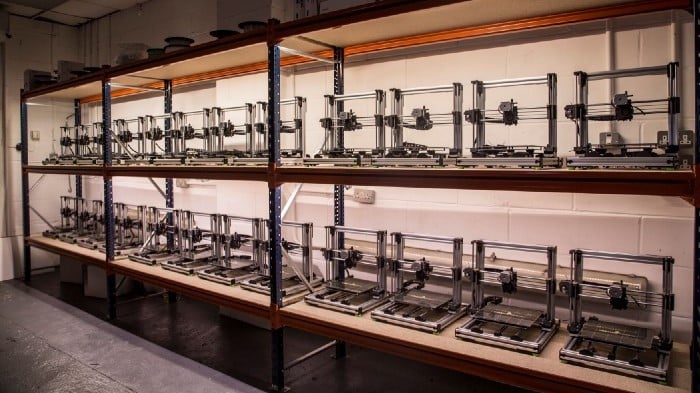3D printing is booming, and industry is beginning to take notice. From custom car parts to homemade PPE, demand for printing services is going through the roof. With a bit of planning, preparation, and strategy, you too can get in on the ground floor.
A 3D print “farm” is an operation with a focus on 3D print manufacturing with more than one printer. The number of machines doesn’t matter – the focus is on keeping them operational and producing as much as possible. Printer farms partially address the single-volume problem with 3D printing by simply having multiple printers producing the same or complementary parts. However, the challenges associated with them can also scale up if you aren’t careful.
Before you hit the “buy now” button on that large-volume printer you’ve been eyeing, it pays to take a step back and plan out your strategy. This article will go into planning your first steps, how to decide what machines to purchase, getting up and operational, and what potential costs you might encounter in your first couple of years. Let’s jump in!
Planning
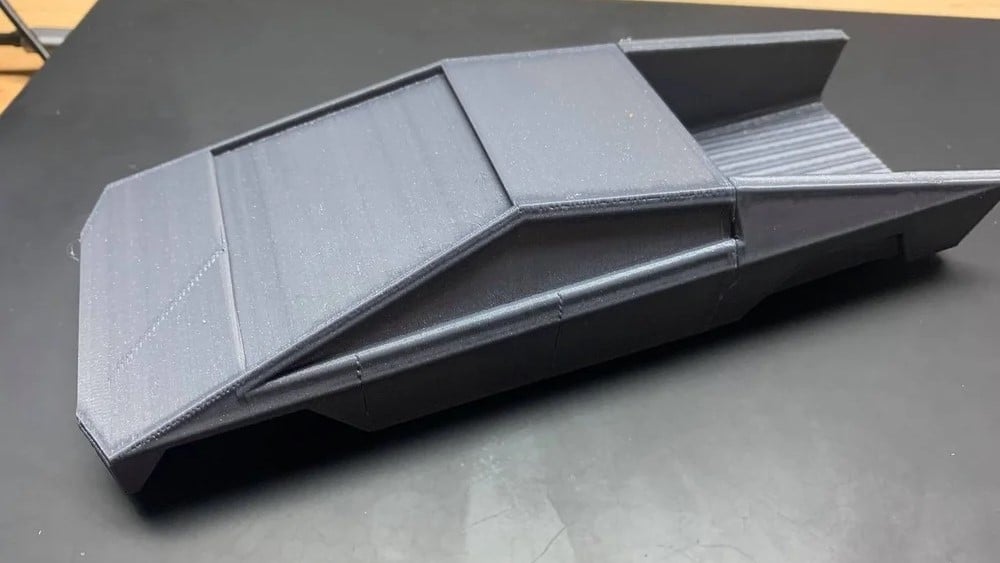
Like a real farm, a printer farm can quickly take up all of your time, whether you have it to spare or not.
To begin, ask yourself questions such as:
- Why do you want to run a print farm?
- Will this be a part-time hustle or a full-time job?
- Are you planning on making money? If so, how are you going to collect? If not, how are you going to cover costs?
- What extra services can you offer, such as custom 3D modeling?
One way you can find the answers to these and other questions is to make a business plan, which outlines the strengths and weaknesses of your idea. This covers everything from the people you are making products for, marketing, and delivering the final product.
Some tips at this stage:
- Find out who you want to make items for. Printing Dungeons and Dragons minis for your friends or for sale requires a different method and fewer quality concerns than face shields for front-line workers.
- Start out small. You don’t need to rent a warehouse before you make your first sale. Produce at your capacity, and focus on uptime (the amount of time the printer is actually producing) to give yourself an idea of what you can deliver on. Grow as you need to, ensuring you can always deliver on what you promised the client.
- Plan how to deal with obstacles before they happen. Like purchasing a plunger for a new apartment, contingencies aren’t necessary until they are, and then they are vital. Brainstorm alternative strategies to common problems that might come up, such as your usual supplier running out of your go-to filament or increasing the price of the resin you need, one or more of your machines becoming inoperative, and so on. An excellent way to find the answers to these and other problems is to ask the community, so make sure you know common terms to help diagnose any issues.
Interview: Trev Page
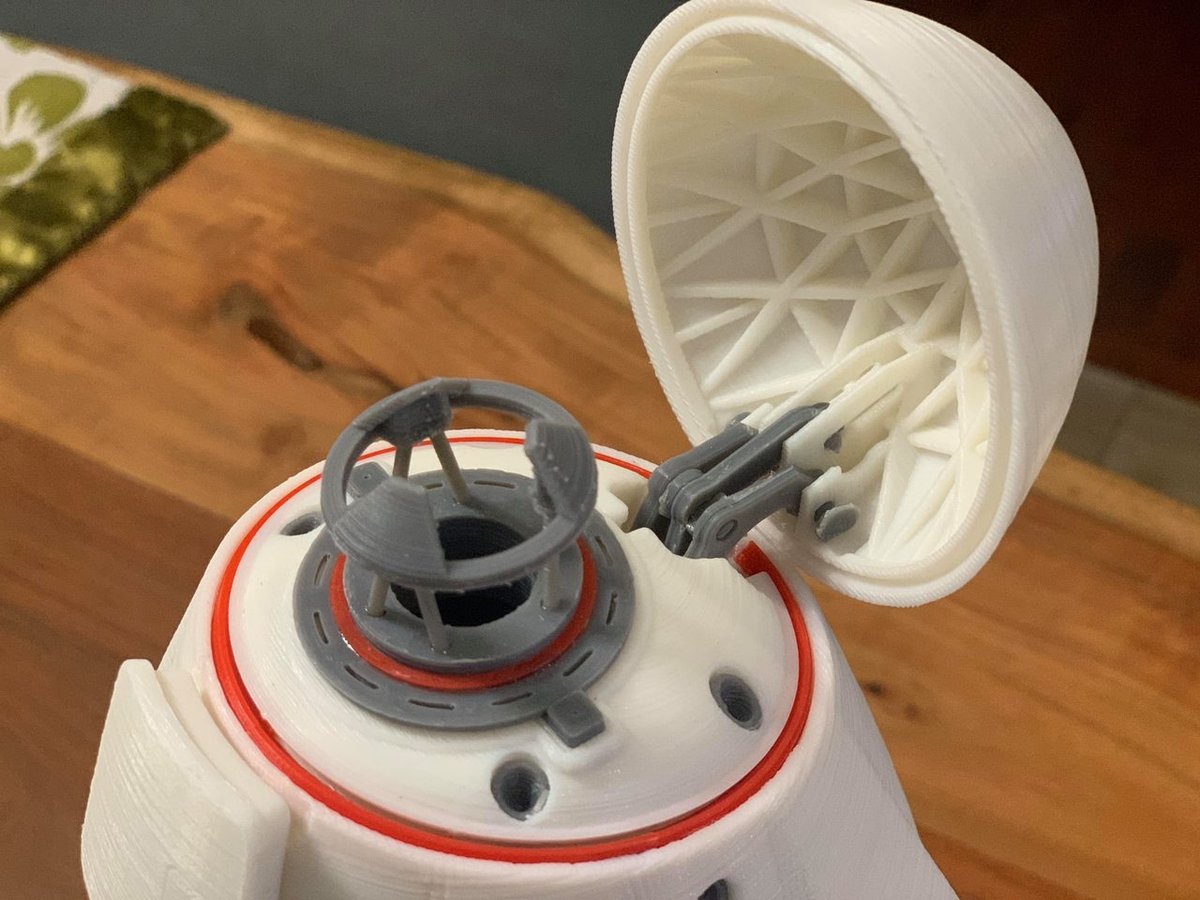
Trev Page is the owner of Trev’s 3D Printing Service in Toronto, Canada. New to the 3D printing scene, he is making on-demand items for locals.
Q: What do you print? Is this a full-time occupation, side business, hobby, or something else?
A: I print just about anything people want. It’s just a hobby. I’m semi-retired now and I have other things to keep me busy too.
Q: Why did you get into 3D print farming?
A: Well, I wouldn’t consider myself a print farmer. I’m just a hobbyist in this field, but I’ve always been a bit of an entrepreneur. I decided to offer my services locally as I saw a potential need for one-off printing.
Q: What do you wish you’d known before you got started?
A: Probably more about the intricacies of getting a 3D printer working correctly. I’ve spent innumerable hours on the web and YouTube learning about how to get really good prints, dealing with slicer software, and also learning about 3D design software.
I took drafting in the early 80s in high school (I’m dating myself) and liked the process of creating but hated the manual process of correcting drawings. I wish we had CAD software like we do today! It’s so much more fun now.
Q: Any tips for people starting out their own multi-printer farm?
A: Learn as much as you can, make lots of mistakes, and experiment. Don’t be afraid of failure, I’ve had plenty, but you only truly learn from the mistakes. And above all else, make it fun. Otherwise, it’s just a job!
Purchasing
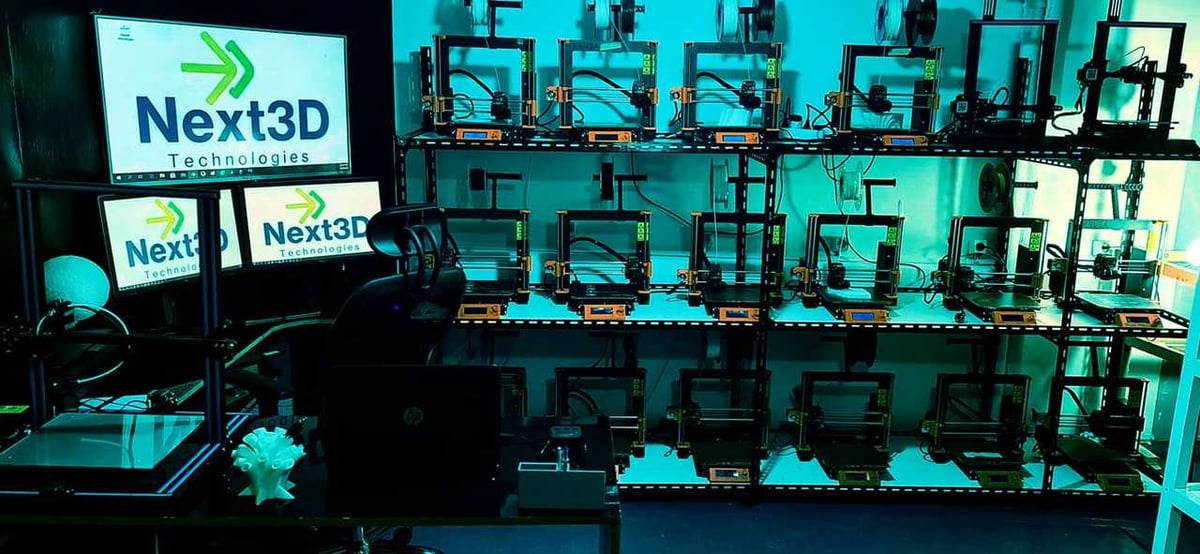
While you won’t be purchasing house-sized assembly robots like a factory, goods purchasing is at the heart of a print farm. Machines that require constant tweaking or that cannot produce the materials you need could sink your business before it begins.
There are four main areas to consider when purchasing: compatibility, reliability, cost, and output capacity.
Compatibility
Simply put, will this printer meet your customers’ specific requirements? If a client needs a print made of food-safe PLA, a roomful of resin printers are going to be useless. If the product is going to be put under significant strain, should you print in the toughest filament, or invest in a metal SLS printer? Try to suss out what your customer will use the object for before you commit to purchasing a printer to create it.
Reliability
3D printers are still in the initial stages of development in many ways, and quality control can vary widely between manufacturers, models, and even individual units. Uptime, or the time spent actually producing, is essential to a business. Research the time spent maintaining rather than producing. A good place to start is looking at the best entry-level printers to purchase for businesses.
Cost
Pricing changes constantly so it can be difficult to know when to buy. Check out this article on how to make a purchasing decision for your business to discover how to approach this step-by-step.
Output Capacity
In manufacturing, volume is key. Every millimeter of print area you can utilize is a reduction in costs and an increase in profit. Keep an eye out for large-volume printers as they will more than pay for themselves in terms of greater output.
Interview: Next3D
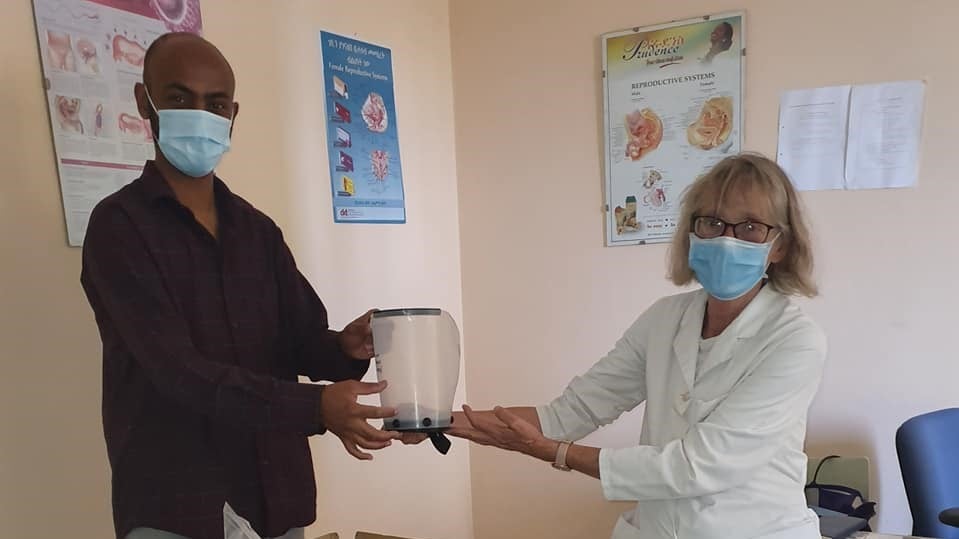
Next3D is the first print farm to operate in Addis Ababa, Ethiopia. Offering a variety of services to both local businesses and tourists, they have high hopes for a 3D printed future.
Q: What do you print?
A: At Next3D, we print Ethiopian tourist sites such as architectural models. We offer 3D modeling as well and print-on-demand prototypes and promotional items.
Q: How many and what brand of printers do you use?
A: Next3D studios has 30 printers:
Q: How many of your printers are operational, on average?
A: Out of the 30 printers we have, on average 10 are operational. Currently, Next3D studios is not working at full capacity – we are only making a small number of architectural models, with 10 printers working full time. Next3D Farm has just launched; we are collecting market feedback and continuing to develop our product.
Q: What is the best investment in your farm?
A: More printers means more production. Next3D used to have eight printers. We’ve recently added 22 Prusa i3 MK3S printers, which has been the best investment so far to elevate our capacity.
Operation
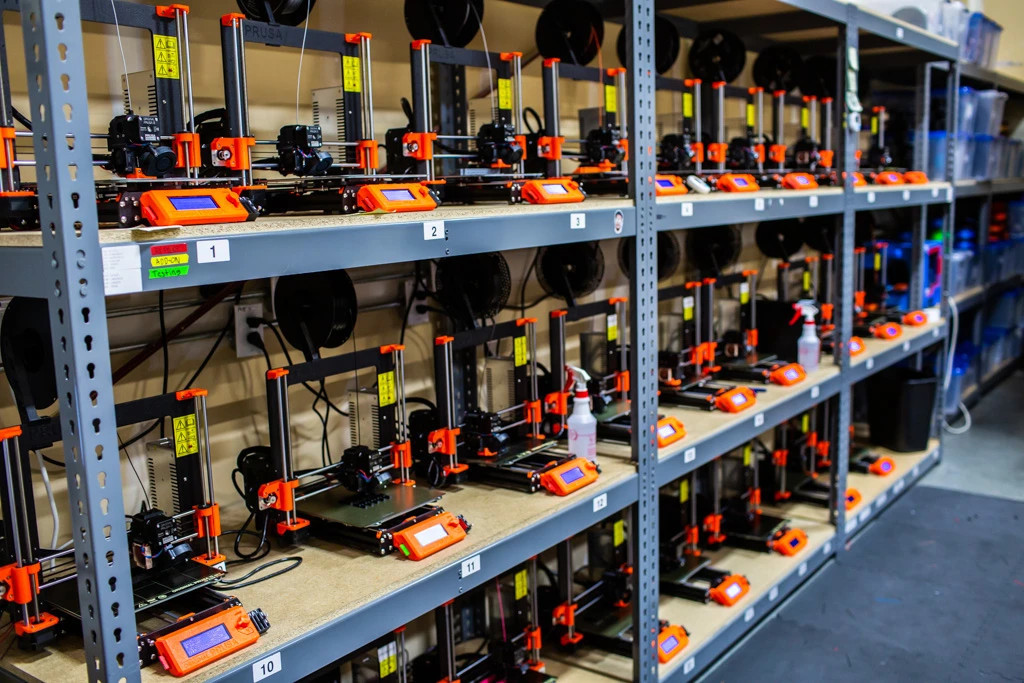
Anyone that deals with manufacturing will tell you that the actual product is the least of your concerns – it’s the machinery maintenance, wear and tear, software problems, and so on, that take up the bulk of your time. Minimizing these issues will be one of the most effective ways to ensure your business will survive and thrive, whether you’re just starting out or are well-established. Let’s take a look at some things to consider.
Regular Maintenance
The more complex a machine, the more things that can go wrong. Even if the machine is producing fine, it can throw a gear if it goes too long between maintenance times. There are a few simple things to look out for that are common to all printers, and some maintenance tasks that are good to perform regularly on FDM printers.
Upgrades
3D printing has exploded in popularity over the last few years. One major reason is manufacturers’ efforts to make sure the printer works straight out of the box, reducing set-up time considerably. But what works for a few prints often fails over time, and it’s a good idea to know what upgrades are available. Better bed springs, metal extruders, auto-bed-leveling sensors, and so on, can end up paying for themselves by reducing the amount of maintenance required and improving the quality of your prints.
Automation Software
Running a single printer by SD card can be tedious; running 10 is a nightmare. Luckily there are a variety of services to make the operation of multiple printers smoother by sending files to the printer, monitoring prints, alerting you when the job is done, among other features. Some programs you might want to look into include:
- 3DPrinterOS (paid, contact for pricing, trial available)
- Authentise (paid, contact for pricing, trial available)
- AMFG (paid, contact for pricing, trial available)
- OctoPrint (free, accepts donations)
- Materalise (paid, contact for pricing, trial available)
Keep to the Same Ecosystem
Keeping things as simple as possible is a good rule for any business, and it goes double for print farms. Understanding the quirks of a single manufacturer is a lot easier than trying to remember which has what weaknesses. Keep your equipment to as few brands, makes, and models as possible to avoid unnecessary complications. A good rule of thumb is to have one go-to brand for your printers, supplies, and add-ons, as well as one backup brand for each.
Post-Processing
Aside from printing errors, the biggest issue facing 3D printing as a manufacturing tool is post-processing: clipping off supports, sanding down layer lines, and other finishing touches takes time and expertise. You want customers to get a nice finished product, rather than something that looks like it’s still in progress.
Packaging & Shipping
Packaging can be tricky, as printing can create unique shapes, including extremely delicate and fragile ones. If possible, slice and print these separately, and make sure they are packed as well as you can.
As for shipping, there are more specialized articles and websites to show how best to ship bespoke items. Choose the service that best suits your needs and your region, but be prepared to lose some product to a number of problems, such as incorrect addresses, shipping methods, or even “return to sender”. These things happen even to Amazon, but the longer you keep at it, the better you will become.
Real-World Example: Out of Darts
Out of Darts makes 3D printed parts and modifications for Nerf foam blasters. Unfortunately, due to moving their warehouse, they were not able to be interviewed for this article, but the video below is a good summary of their successful business.
Expenses & Capitalization

Even if you’re not charging money for your services, at the end of the day, a print farm acts like a business. Money is needed to supply filament, resin, electricity, and even maintenance. If it’s going to last any time at all, you’ll need to keep track of what you spend and budget accordingly.
Startup Costs
The most expensive time in any venture is right at the start, as you have to not only cover recurring expenses, but one-off costs like your first couple of printers, some rented floor space, a business logo, and so on. Keep track of these and compare them to future expense reports to see how much you’ve shelled out. There also needs to be money on hand for unexpected costs, such as needing to move your setup due to an uncooperative landlord.
There are many business loans specifically set up to cover startup costs, funded by governments, banks, or private organizations. You may even secure one to lease your first few 3D printers to get a jump start in your business.
Sunk Costs
Sunk costs are the day-to-day recurring expenses every business faces. The old joke is that they’re called sunk costs because they can sink your business.
Finding ways to minimize these while still delivering to your clients will be the success benchmark of your business. In particular, things like filaments, shipping, and electricity can really add up. Calculate the cash-flow projections (potential earnings minus costs) to see where you can or should cut back on.
Breaking Even
This is probably the most crucial factor to consider: How many sales in a given time frame (days, weeks, months) do you need to simply cover all the costs of starting and running your business? This figure will be one of your most-referenced in your first few years of operation, so make sure to follow the steps in the business plan outline linked at the beginning of this article, as it will give you all the necessary factors to start with.
Interview: Repkord
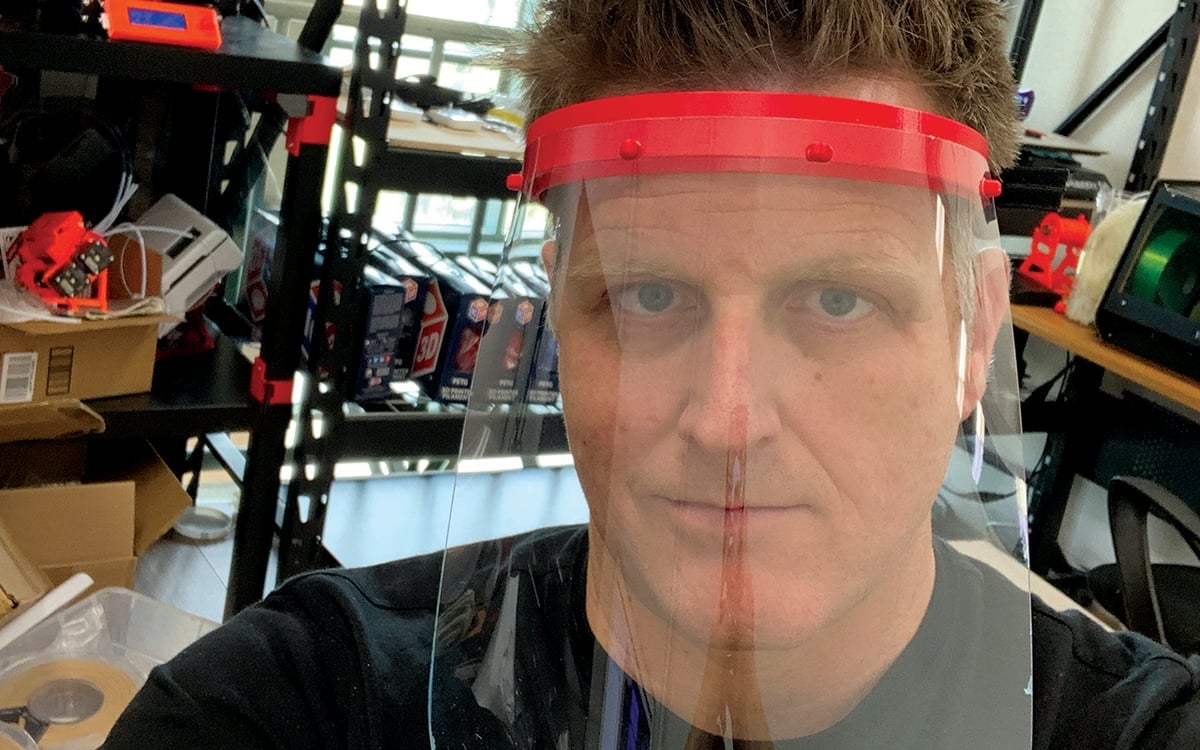
Alan Pucinelli is CEO of Repkord, a filament storage and organization company, and founder of Operation Shields Up, a charity that printed 32,000 face shields in only 3 months to donate to American front-line workers.
Q: Why did you get into 3D print farming?
A: Because it is a much more affordable way to launch and market test products without having to invest in traditional molding or tooling. It also allows for easier and more cost-effective continuous improvement throughout the life of a product and adaptability, should a product no longer be viable and a pivot is needed.
Q: What do you wish you’d known before you got started?
A: That the challenges lie far more in the process development and systems that support it than the prints themselves. One of the things I repeatedly said at the height of the Shields Up operation was “This is a logistics problem, not a making problem.”
Very apropos of print farm operations too. Keeping it staffed, maintained, keeping an eye on consumables levels, thinking about QC and packaging. The list goes on and on. The printing is such a small part of it. It reminds me of painting a house. 80+% of the job is prep and clean up. The painting (printing) is the easy part (relatively speaking!).
Q: What is your number one expense? (Electricity, filament, upgrades, etc.)
A: Human resources is number one. Labor is very expensive in the US so to compete with cheaper labor markets and still manufacture in the US, automation and efficiency are paramount. 3D printing and other computer-controlled fabrication equipment obviously play a huge role here. Second to labor would be the shop (office) overhead.
Equipment of course is a large capital expense but, over the useful lifetime of the printers, it isn’t too bad. Contrary to popular belief (fears maybe), electricity cost is pretty insignificant in the cost of fabrication. From a consumables standpoint, filament would be number one.
Q: What is the best investment in your farm? (More printers, better filament, etc.)
A: Moving to a unified ecosystem for sure. I’m a firm believer in not reinventing the wheel. After visiting Prusa headquarters in Prague and seeing how they’ve proven out the system and shown their printers to be true workhorses for use in business, I was sold.
This extends beyond just the printers to the slicer and the filament as well. When you can control as many variables as possible in a process, you can maximize the consistency of outcomes. Prusa knows this and they live by it. They also lead the way with PPE face shield development and outreach and so I wanted to support and mirror their efforts here in the US.
The second biggest investment is having trained operators who can think on their feet, identify issues, provide and propose solutions, and abide by and help improve processes for anyone else who may need to work alongside or after them.
Q: Any tips for people starting out their own multi-printer farm?
A: As with any farm, you reap what you sow. If you are serious about actual farming, you need to think more like a business and less like a hobbyist simply wanting to have fun. While it’s tempting to tinker and upgrade, the printers on a farm need to be workhorses. You’re looking for Hondas, not Ferraris.
It’s ok to still have your fun project printers but do that with other printers, not your farm printers. Consistency and efficient workflow win the day. If you can afford a unified ecosystem of the same printers, do it, or work toward it, though it’s not required. At some point, you’ll hit a scalability ceiling trying to maintain multiple machines.
Plan ahead! A lot of the things that will alleviate pain points down the road are the less tangible or thought of aspects of the farm. Invest in good racking, lighting, ventilation, make sure you have ample power, and then double it so you have room to grow.
Think about where the raw materials are going to come in and be stored. Where are the finished parts are going to go? How do you plan to QC everything? What’s the regular maintenance schedule? And so on…
Think about what your contingency plan is if you have unexpected power outages or lose capacity to breakdowns. That stuff isn’t a matter of if, it’s a matter of when. An entire book could likely be written on this subject but the TLDR of it is plan, plan, plan. It’s not about printers, it’s about process.
Get Started Now
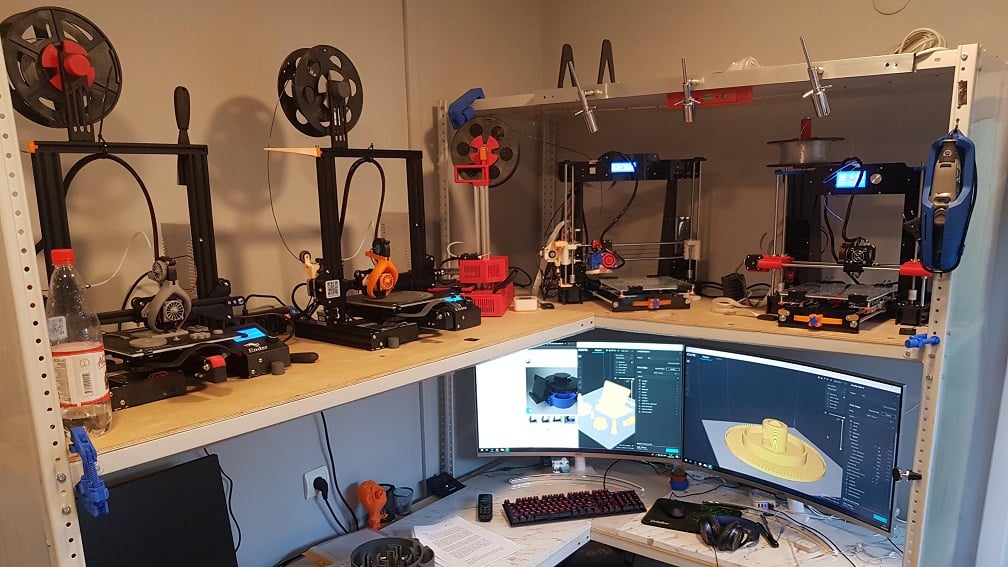
We hope you’ve learned something and are inspired by some of the entrepreneurs you’ve heard about. Of course, there are perils and pitfalls to operating a print farm, but one thing is for sure: If you don’t get started, you’ll never succeed. Good luck!
License: The text of "3D Print Farm: How to Get Up & Running" by All3DP is licensed under a Creative Commons Attribution 4.0 International License.


